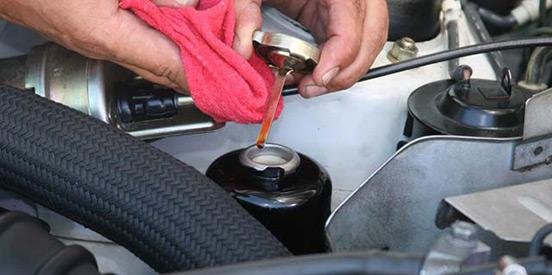How Far to Press on Power Steering Pulley: Expert Tips
Press the power steering pulley until it’s flush with the shaft, ensuring proper alignment and function. This step is crucial in preventing any issues with the power steering system down the line.
Integrating a power steering pulley correctly is essential for optimal vehicle performance and safety. The power steering system plays a crucial role in helping drivers maintain control and maneuver their vehicles effectively. When installing or replacing a power steering pulley, it’s vital to press it on the shaft until it’s flush.
This ensures proper alignment and function, preventing potential problems in the future. By following this simple yet critical step, you can help maintain the efficiency and longevity of your power steering system.
Power Steering Pulleys
When it comes to the smooth functioning of your vehicle’s power steering system, the power steering pulley plays a crucial role. Understanding the importance of the power steering pulley and knowing how to install it correctly is essential for maintaining the overall performance of your car’s steering mechanism.
The Role Of The Pulley In Power Steering
The power steering pulley serves as a vital component in the power steering system, as it is responsible for transferring power from the engine to the power steering pump. This enables the pump to generate hydraulic pressure, which in turn assists in the steering of the vehicle. The pulley’s function is to ensure smooth and efficient power transmission, allowing for responsive and effortless steering control.
Symptoms Of Incorrect Pulley Installation
Incorrect installation of the power steering pulley can lead to a range of noticeable symptoms, indicating potential issues within the power steering system. These symptoms may include abnormal noise or vibration during steering, increased steering effort, or uneven tire wear. It is crucial to address these symptoms promptly to prevent further damage to the power steering components.
Tools Required For Pulley Installation
To install a power steering pulley, you will need tools like a pulley installer kit, torque wrench, and lubricant. Press the pulley until it is flush with the pump shaft, ensuring it is securely in place for optimal performance.
Before we dive into the tools required for power steering pulley installation, let’s first understand the importance of a pulley installer tool. It is a specialized tool designed to make the installation process smooth and efficient.
The pulley installer tool ensures that the pulley is pressed onto the power steering pump shaft with the correct amount of force. This tool is an essential part of the installation process, and without it, the pulley may not be installed correctly, leading to issues with the power steering system.
To install a power steering pulley, you’ll need several tools, including:
- A pulley installer tool
- A pulley removal tool
- A torque wrench
- A socket set
- A breaker bar
- A power steering fluid pump
These tools will help you remove the old pulley and install the new one correctly. It’s essential to have all the tools at hand before starting the installation process to avoid any delays or issues.
Additional Equipment For A Smooth Process
Aside from the tools mentioned above, there are a few additional pieces of equipment you may want to have on hand to make the installation process even smoother. These include:
- A power steering pulley puller
- A pulley holding tool
- A pulley alignment tool
- A pulley removal/installation kit
While these tools are not essential, they can make the installation process much easier and quicker. Having the right tools and equipment on hand can save you time and frustration, ensuring that the power steering pulley is installed correctly and functions correctly.
In conclusion, installing a power steering pulley requires several specialized tools and equipment. A pulley installer tool is essential to ensure the pulley is installed correctly, along with other tools such as a pulley removal tool, torque wrench, socket set, and breaker bar. Additional equipment such as a pulley puller, holding tool, alignment tool, and removal/installation kit can make the process even smoother.
With the right tools and equipment, you can install the power steering pulley with ease, ensuring that your vehicle’s power steering system functions correctly.
Common Mistakes To Avoid
While measuring the pulley depth, it is important to avoid common mistakes that could lead to inaccurate measurements and potential issues with the power steering system. Here are some mistakes to steer clear of:
- Avoid measuring the pulley depth while the power steering pump is still attached to the engine. This can introduce errors due to the pump’s position and alignment.
- Avoid using an inaccurate or worn-out measuring tape or caliper. Ensure your measuring tools are in good condition to obtain reliable measurements.
- Avoid rushing through the measurement process. Take your time to ensure precision and accuracy.
- Avoid relying on a single measurement. Repeat the process multiple times and calculate the average for a more accurate result.
By being aware of these common mistakes and taking the necessary precautions, you can ensure accurate measurements of the power steering pulley depth, leading to a properly functioning power steering system.
Step-by-step Pulley Installation
In order to ensure proper functioning of your power steering system, it is crucial to correctly install the power steering pulley. This step-by-step guide will walk you through the process, from aligning the pulley to applying the correct pressure.
Aligning The Pulley
Proper alignment of the power steering pulley is essential for optimal performance. Follow these steps to ensure correct alignment:
- Begin by inspecting the power steering pump shaft and the pulley for any signs of damage or wear.
- If necessary, replace the power steering pump or the pulley before proceeding with the installation.
- Place the pulley onto the power steering pump shaft, ensuring that it sits flush and straight.
- Rotate the pulley by hand to check for any wobbling or misalignment.
- If the pulley is not aligned properly, adjust its position until it rotates smoothly without any wobbling.
- Once the pulley is aligned, proceed to the next step.
Applying The Correct Pressure
Applying the correct pressure when pressing the power steering pulley is crucial to prevent damage and ensure a secure fit. Follow these steps to apply the correct pressure:
- Place the power steering pulley installation tool onto the pulley.
- Ensure that the installation tool is properly aligned with the pulley.
- Slowly and steadily apply pressure to the installation tool, pressing the pulley onto the power steering pump shaft.
- Continue applying pressure until the pulley is fully seated on the shaft.
- Double-check the alignment of the pulley to ensure it is still straight and flush.
- If necessary, make any adjustments to the alignment before proceeding.
- Once the pulley is securely installed and properly aligned, remove the installation tool.
By following these step-by-step instructions for pulley installation, you can ensure that your power steering system operates smoothly and efficiently. Remember to always refer to the manufacturer’s guidelines for your specific vehicle model to ensure the correct installation process.
Determining The Right Pressure
When it comes to power steering pulley, determining the right pressure is crucial for ensuring optimal performance and longevity of the system. The amount of pressure applied when pressing on the power steering pulley can significantly impact its efficiency and the overall functionality of the power steering system. Here’s a closer look at how to determine the right pressure to apply.
Factors Influencing Pressure
Several factors influence the amount of pressure to apply when pressing on the power steering pulley. These include the type of power steering system, the condition of the pulley, the vehicle’s make and model, and the manufacturer’s specifications.
Tips From The Experts
Experts recommend referring to the vehicle’s service manual to determine the specific pressure requirements for the power steering pulley. Additionally, it’s important to use the correct tools and techniques to apply the appropriate pressure without causing damage to the pulley or the power steering system.
Here’s a list of frequently asked questions (FAQ) along with answers on how far to press on a power steering pulley:
1. How Far Should I Press the Power Steering Pulley onto the Shaft?
- Answer: The power steering pulley should be pressed onto the shaft until it is flush with the end of the pump shaft. In most cases, the pulley needs to be aligned with the other pulleys (such as the crankshaft pulley) to ensure proper belt alignment.
2. How Do I Know When the Power Steering Pulley Is Properly Seated?
- Answer: The pulley is properly seated when it is flush with the end of the pump shaft and aligned with the other pulleys in the system. There should be no gap between the pulley and the shaft, and the belt should run straight without any misalignment.
3. What Happens If I Press the Power Steering Pulley Too Far?
- Answer: Pressing the pulley too far can cause it to interfere with the power steering pump housing or cause misalignment with the other pulleys, leading to belt wear, noise, and potential damage to the steering system.
4. What Happens If I Don’t Press the Power Steering Pulley Far Enough?
- Answer: If the pulley is not pressed far enough, it will be misaligned with the other pulleys, causing the belt to run at an angle. This can lead to belt slippage, increased wear, and inefficient power steering operation.
5. Can I Use a Hammer to Press on the Power Steering Pulley?
- Answer: No, you should never use a hammer to press on the pulley as this can damage the pulley, shaft, or power steering pump. Always use a pulley installer tool designed specifically for this purpose to apply even pressure and ensure proper installation.
6. What Tool Should I Use to Press the Power Steering Pulley?
- Answer: Use a power steering pulley installer tool, which is specifically designed to press the pulley onto the shaft smoothly and accurately. This tool ensures that the pulley is aligned properly and pressed to the correct depth.
7. Is It Necessary to Align the Power Steering Pulley with Other Pulleys?
- Answer: Yes, proper alignment is crucial to prevent belt misalignment, which can cause premature belt wear, noise, and potential damage to the steering system. Use a straight edge to check the alignment of the power steering pulley with the other pulleys.
8. How Tight Should the Belt Be After Installing the Power Steering Pulley?
- Answer: After installing the pulley, the belt should be tight enough to prevent slippage but not so tight that it causes excessive strain on the pulleys or bearings. You should be able to press the belt about half an inch in the middle of its longest run.
9. Can I Reuse the Old Power Steering Pulley?
- Answer: It’s generally recommended to inspect the old pulley for any signs of wear, cracks, or damage. If the pulley is in good condition, it can be reused; otherwise, replacing it with a new one is the best option.
10. What Should I Do If the Pulley Is Not Aligned Properly?
- Answer: If the pulley is not aligned properly, use the pulley installer tool to carefully adjust the depth until it is flush with the end of the pump shaft and aligned with the other pulleys. Do not attempt to adjust it with a hammer or excessive force.
11. How Can I Prevent Damage When Installing the Power Steering Pulley?
- Answer: To prevent damage, use the correct pulley installer tool, apply even pressure, and ensure that the pulley is pressed on straight and aligned with the other pulleys. Avoid using excessive force or tools not designed for pulley installation.
12. What Are the Signs of an Improperly Installed Power Steering Pulley?
- Answer: Signs of an improperly installed pulley include belt noise (squealing or chirping), belt misalignment, difficulty in steering, or unusual vibrations coming from the power steering system. If you notice any of these signs, recheck the pulley installation.
13. Do I Need Professional Help to Install a Power Steering Pulley?
- Answer: If you are unfamiliar with the process or lack the proper tools, it’s recommended to seek professional help. Improper installation can lead to serious issues with the power steering system, so ensuring the pulley is installed correctly is crucial.
14. Can Misalignment of the Power Steering Pulley Cause Steering Problems?
- Answer: Yes, misalignment can lead to improper belt tension, which can affect the operation of the power steering pump, resulting in steering problems, noise, and potential damage to the system components.
15. How Long Does It Take to Install a Power Steering Pulley?
- Answer: Installing a power steering pulley typically takes about 30 minutes to an hour, depending on your experience and the accessibility of the power steering pump. Having the right tools and following the correct procedure can make the process smoother.
Conclusion
Overall, knowing how far to press on power steering pulley is crucial for maintaining your vehicle’s performance and safety. Failing to apply the proper pressure can result in damage to the power steering system, which can be costly to repair.
By following the manufacturer’s guidelines and using the right tools, you can ensure that you are applying the correct amount of pressure to the power steering pulley. Regular maintenance and inspections can also help prevent potential issues with your power steering system.
Remember to always prioritize safety and proper maintenance when it comes to your vehicle.

Specializes on car underchassis & power steering repair. We have experienced mechanic to attend all your underchassis & power steering repair needs.


